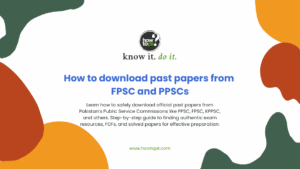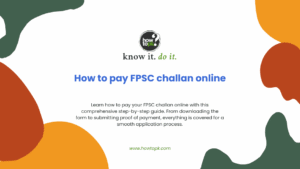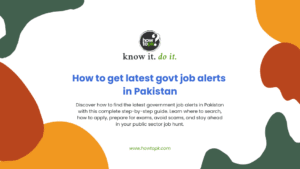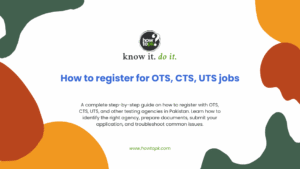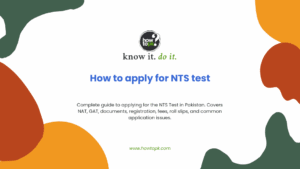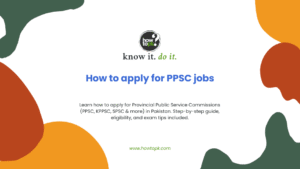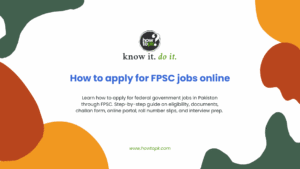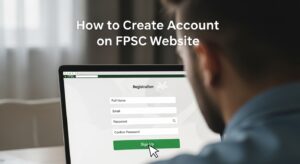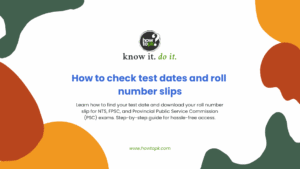Crafting a CV for government roles is not just about listing your job history or skills; it’s a carefully orchestrated process that involves multiple structured steps, each with its own demands. To begin with, it is essential to recognize that a government CV differs significantly from resumes used in the private sector. These CVs prioritize detailed documentation, such as exact employment dates, hours worked per week, and even supervisor contact information.
Understanding the expectations, like aligning your experience with explicit criteria outlined in job descriptions or ensuring you include citizenship and clearance statuses, can make or break your application. This initial preparation stage also includes gathering a wide range of personal and professional information, from academic records to community service, which ensures nothing important is left out when you begin writing.
Once you have everything you need, the structure and format of the CV come into focus. Government recruiters often prefer a reverse-chronological format because it clearly illustrates your career trajectory and current qualifications. There is less emphasis on brevity and more on clarity, accuracy, and completeness, with typical lengths stretching to several pages if needed. At this point, you must focus on presenting your work experience with specificity and impact.
Bullet points are used to communicate responsibilities and achievements, with an emphasis on measurable outcomes and relevance to the job description. Each entry should be cleanly formatted and consistent, paying close attention to font type, size, and spacing. Alongside work history, a well-written professional profile and a thorough list of skills and certifications contribute to a strong presentation. Keywords from the job posting should be naturally incorporated across these sections to ensure compatibility with applicant tracking systems (ATS).
After writing the main content, the final stretch involves proofreading, formatting for clarity, and preparing the document for submission. This stage is just as critical as any other. A single overlooked error or incorrect date can undermine an otherwise excellent application.
Ensuring the document is saved in the correct format, like PDF, and follows all specified guidelines, including naming conventions and additional documents, will prevent your CV from being disqualified before it is even reviewed by a human. While a cover letter may not always be required, including one tailored to the position can enhance your application by showcasing your motivations and addressing any unique aspects of your candidacy.
By approaching each stage with attention to detail and purpose, you give yourself a strong advantage in the highly competitive world of government hiring.
Step 1: Understand the Nature of a Government CV
What Makes a Government CV Different?
Government CVs are often more detailed than private sector resumes because government roles require clear evidence of competencies, qualifications, and experience relevant to public service. Unlike private sector CVs, which may emphasize brevity and impact, government CVs often need to demonstrate:
- Compliance with specific job criteria and legal requirements
- Clear documentation of work history, including hours worked and supervisor contacts
- Use of precise language and keywords from the job description
- Evidence of achievements quantified with data or examples
- Transparency about citizenship, security clearances, and eligibility
Understanding these differences helps you tailor your CV to meet government standards, which increases your chances of passing automated screening tools and human review.
Step 2: Gather All Relevant Information
| Section | Details |
|---|---|
| Personal Information | Full legal name, professional email, phone number, and current city/state. |
| Citizenship Status | Naturalized citizen, permanent resident, or other relevant status. |
| Education | Degrees, certifications, institutions, dates, honors, relevant coursework. |
| Work Experience | Employer names, job titles, dates (month/year), hours worked weekly, supervisor contact info (if requested), detailed responsibilities, and achievements. |
| Skills | Both technical (e.g., software proficiency, policy analysis) and interpersonal (e.g., leadership, communication). |
| Certifications & Licenses | Especially those required or preferred for government roles. |
| Awards & Recognitions | Any honors or special acknowledgments. |
| Volunteer & Community Service | Relevant unpaid work that demonstrates transferable skills. |
| Security Clearances | If applicable, include level and date obtained. |
| Availability | Full-time, part-time, temporary, or permanent status. |
Troubleshooting Tips
Issue: Missing dates or details for past jobs
Solution: Contact previous employers or HR departments for verification; use LinkedIn or old pay slips to confirm dates.Issue: Uncertainty about which skills to list
Solution: Review the job description carefully and note the skills explicitly mentioned; use those as a baseline.
Step 3: Choose the Right CV Format
Recommended Format for Government CVs
- Reverse-Chronological Format: Start with your most recent job and work backward. This format is preferred because it clearly shows your career progression and makes it easier for recruiters to verify your experience.
- Length: Government CVs can be longer than private sector resumes—typically 2 to 4 pages—but avoid unnecessary fluff.
- Design: Keep it clean and professional. Use standard fonts (Arial, Calibri, Times New Roman), consistent font sizes (11-12 pt), and clear headings. Avoid graphics, photos, or fancy formatting that can confuse ATS software.
Troubleshooting Tips
Issue: Struggling to fit all information without making the CV cluttered
Solution: Use bullet points for clarity, avoid lengthy paragraphs, and remove irrelevant or outdated information.Issue: Gaps in employment history
Solution: Address gaps briefly in your cover letter or in the CV under the relevant timeline (e.g., “Career break for family care, [dates]”).
Step 4: Create a Clear and Professional Header
What to Include
- Full name (with any professional designations)
- Phone number (preferably mobile)
- Professional email address
- Location (city and state/province; full address is optional)
- Optional: LinkedIn profile or professional website link
Formatting Tips
- Place your name in a larger, bold font at the top.
- Align contact details either centered or left-aligned for neatness.
- Avoid including personal details like age, marital status, or photos, as these are typically irrelevant and sometimes discouraged.
Troubleshooting Tips
Issue: Using an unprofessional email address
Solution: Create a new email with your name if needed.Issue: Forgetting to update contact info before submission
Solution: Double-check all contact details before sending.
Step 5: Write a Strong Professional Profile (Summary)
Purpose
This brief section (3-5 sentences) acts as your elevator pitch. It should:
- Summarize your key qualifications and experience
- Highlight your suitability for the government role
- Use keywords from the job description
- Be concise and compelling to grab attention quickly
How to Write It
- Start with your professional title or years of experience.
- Mention your core skills or areas of expertise.
- Include your main achievements or strengths.
- End with a statement about your career goals aligned with the role.
Example
“Experienced public policy analyst with over 8 years in government agencies, specializing in regulatory compliance and stakeholder engagement. Proven track record in developing data-driven policies that improved service delivery by 20%. Seeking to leverage expertise in governance and project management to contribute to [Department Name].”
Troubleshooting Tips
Issue: Writing a vague or generic summary
Solution: Tailor it specifically to the job description; avoid clichés like “hardworking” without evidence.Issue: Making it too long or too short
Solution: Stick to 3-5 sentences focusing on relevance and impact.
Step 6: Detail Your Work Experience with Impact
What to Include for Each Job
- Job title (use official titles)
- Employer’s full name and location (city, state, country if relevant)
- Start and end dates (month and year)
- Average hours worked per week (important for government roles)
- Supervisor’s name and contact info (if requested and you consent)
- Detailed bullet points describing responsibilities and achievements
Writing Effective Bullet Points
- Use action verbs: led, managed, developed, coordinated, analyzed, etc.
- Quantify achievements: “Increased efficiency by 15%,” “Managed a budget of $500,000.”
- Align responsibilities with the job description keywords.
- Highlight teamwork, leadership, problem-solving, and compliance experience.
- Include awards or recognitions related to the role.
Troubleshooting Tips
Issue: Difficulty quantifying achievements
Solution: Think about outcomes, improvements, or feedback you received; use approximate figures if exact numbers aren’t available.Issue: Overloading with too many details
Solution: Focus on the most relevant responsibilities and achievements; keep bullet points concise (1-2 lines each).
Step 7: Include Your Education
What to List
- Degree or certification name (e.g., Bachelor of Arts in Political Science)
- Institution name and location
- Dates attended or graduation date
- Honors, distinctions, or awards
- Relevant coursework, projects, or theses (especially if early career)
- Membership in academic or professional societies
Formatting Tips
- List education in reverse chronological order.
- Include GPA only if it is strong and relevant.
- For ongoing education, indicate “Expected graduation [date].”
Troubleshooting Tips
Issue: Limited formal education
Solution: Emphasize relevant certifications, training, and experience; include volunteer or project work.Issue: Long time since graduation
Solution: Focus more on recent work experience and skills; keep education section concise.
Step 8: Highlight Relevant Skills
How to Choose Skills
- Review the job description for required and preferred skills.
- Include both hard skills (e.g., Microsoft Office, data analysis, legal research) and soft skills (e.g., communication, leadership).
- Mention transferable skills gained from other roles.
Presenting Skills
- Create a dedicated “Skills” section.
- Use bullet points or a simple list.
- Optionally, add brief context or examples for complex skills.
Troubleshooting Tips
Issue: Listing irrelevant or generic skills
Solution: Be selective and tailor skills to the job; avoid overused terms like “team player” without context.Issue: Unsure how to demonstrate soft skills
Solution: Provide examples in your work experience section that show these skills in action.
Step 9: Add Certifications, Training, and Security Clearances
What to Include
- Name of certification or clearance
- Issuing organization
- Date obtained and expiration (if applicable)
- Brief description if not widely known
Why It Matters
Many government roles require specific certifications or security clearances. Including these upfront shows you meet eligibility requirements.
Troubleshooting Tips
Issue: Not having required certifications
Solution: Consider enrolling in relevant courses or training; mention any in-progress certifications.Issue: Forgetting to update clearance status
Solution: Keep a personal record and update your CV regularly.
Step 10: Include Additional Sections as Needed
Possible Sections
- Awards and Honors
- Professional Memberships
- Volunteer Experience
- Publications or Presentations
- Languages Spoken
- Technical Proficiencies
How to Decide What to Include
Only add sections that add value and relate to the job. For example, volunteer work demonstrating leadership or community engagement can be very relevant.
Troubleshooting Tips
Issue: Including too many sections making CV cluttered
Solution: Prioritize sections based on relevance and space; consider combining smaller sections.
Step 11: Use Keywords and Tailor Your CV for Each Application
Why Keywords Matter
Government agencies often use Applicant Tracking Systems (ATS) that scan CVs for keywords matching the job description. Using the right keywords increases your chances of passing initial screening.
How to Tailor Your CV
- Carefully read the job posting.
- Highlight keywords related to skills, qualifications, and responsibilities.
- Incorporate these words naturally into your professional profile, skills, and work experience sections.
Troubleshooting Tips
Issue: Overstuffing CV with keywords making it unreadable
Solution: Use keywords contextually and sparingly; focus on genuine relevance.Issue: Not knowing which keywords to use
Solution: Use online tools or word clouds to identify common terms in the job description.
Step 12: Keep It Clear, Concise, and Error-Free
Writing and Formatting Tips
- Use bullet points, short sentences, and clear language.
- Avoid jargon or acronyms unless widely understood.
- Maintain consistent formatting (font, size, spacing).
- Use professional tone and avoid slang or casual language.
Proofreading
- Check spelling, grammar, and punctuation multiple times.
- Read aloud to catch awkward phrasing.
- Use spellcheck tools but do not rely solely on them.
- Ask a trusted friend or mentor to review.
Troubleshooting Tips
Issue: Repeated typos or errors
Solution: Take breaks between edits; use multiple proofreaders.Issue: CV looks cluttered or inconsistent
Solution: Use templates or professional formatting tools.
Step 13: Proofread and Format for Submission
Final Checks
- Ensure all dates and contact info are correct.
- Save the CV as a PDF to preserve formatting.
- Follow the application instructions exactly (file naming, format, submission portal).
- Include any required additional documents (cover letter, references).
Troubleshooting Tips
Issue: Formatting changes after submission
Solution: Always submit PDFs, not Word documents.Issue: Missing application instructions
Solution: Carefully reread job posting and agency website guidelines.
Step 14: Prepare a Tailored Cover Letter
Why a Cover Letter Helps
It allows you to explain why you want the job, highlight key achievements, and address any potential concerns (like employment gaps).
Writing Tips
- Keep it concise (1 page).
- Address it to the hiring manager if possible.
- Reference the job title and department.
- Align your skills and experience with the role.
- End with a call to action (e.g., looking forward to an interview).
Common Issues Faced During Each Step and How to Troubleshoot
| Step | Troubleshooting |
|---|---|
Step 1: Understanding the Government CV Misunderstanding government CV requirements | Research government hiring practices and read official guidelines; seek advice from current or former government employees. |
Step 2: Gathering Information Incomplete or inaccurate information | Use multiple sources to verify; keep a personal employment record updated regularly. |
Step 3: Choosing Format Choosing an inappropriate format | Stick to reverse-chronological unless you have a strong reason; consult examples from government job sites. |
Step 4: Header Issues Unprofessional contact details | Create a professional email; double-check phone numbers. |
Step 5: Writing Profile Generic or irrelevant summary | Tailor each profile to the job; use keywords and focus on impact. |
Step 6: Work Experience Difficulty quantifying achievements or describing responsibilities | Use the STAR method (Situation, Task, Action, Result); ask colleagues for feedback. |
Step 7: Education Uncertainty about what to include | Include all relevant education; if limited, emphasize other qualifications. |
Step 8: Skills Listing irrelevant or too many skills | Prioritize skills from the job description; be honest. |
Step 9: Certifications Missing or expired certifications | Plan to obtain required certifications; mention ongoing training. |
Step 10: Additional Sections Overloading CV with unnecessary info | Keep only relevant sections; combine where possible. |
Step 11: Keywords Overusing keywords or missing them | Use keywords naturally; analyze job descriptions carefully. |
Step 12: Clarity and Errors Typos and poor formatting | Proofread multiple times; use professional templates. |
Step 13: Submission Incorrect file format or missing documents | Follow instructions exactly; confirm submission receipt. |
Step 14: Cover Letter Writing a generic letter or omitting it when required | Tailor your cover letter; treat it as an opportunity to stand out. |
Resources
Federal
Provincial
- Punjab Public Service Commission (PPSC)
- Sindh Public Service Commission (SPSC)
- Khyber Pakhtunkhwa Public Service Commission (KPPSC)
- Balochistan Public Service Commission (BPSC)
Testing Agencies
Online Job Portals
Newspapers
Social Media


